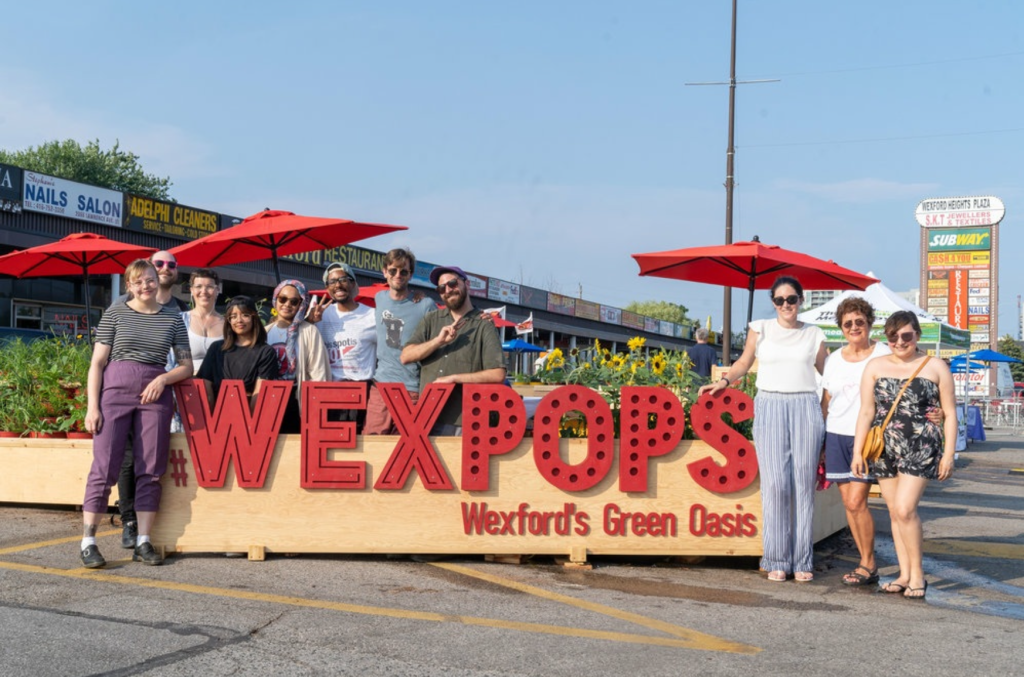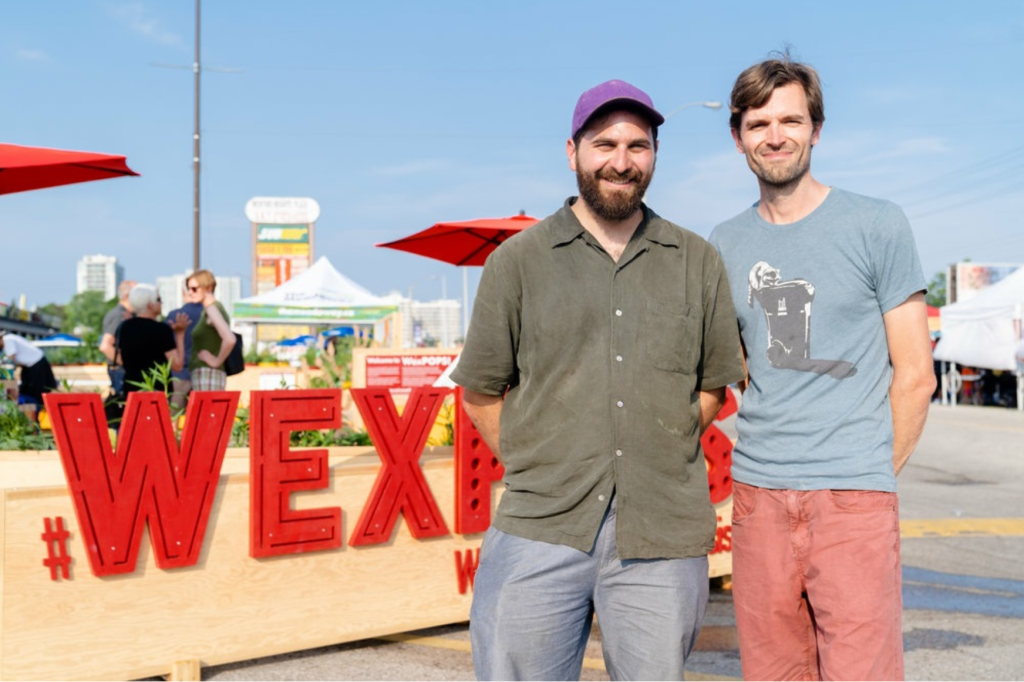2019: WexPOPS
Wexford Heights BIA partners with plazaPOPS to create urban oasis

By Andrew Seale
Link to article
In the middle of Scarborough’s Wexford Plaza parking lot, an oasis has sprouted. Butterflies and bees encircle wildflowers, edibles and meadow grass, while people from the community chatter on benches shaded by umbrellas, framed in by a mural from local artist Echo Railton.
It’s called WexPOPs, and it’s a demonstration of how Toronto’s vibrant inner suburban strip malls, those privately-owned public spaces (POPS), can be turned into ‘pop-up’ community gathering places.
“It’s interesting (seeing) the contrast of a pretty intense nature experience in the middle of a parking lot,” says Brendan Stewart, one of the collaborators on the WexPOPs project and an assistant professor at University of Guelph’s School of Environmental Design and Rural Development.
The project – a collaboration with local stakeholders, the Wexford Heights BIA, Scarborough Arts, and the University of Guelph’s School of Environmental Design and Rural Development, is supported by grants from the BIA Innovation Fund and Park People’s Public Space Incubator grant.
It’s part of the wider plazaPOPS project, spun out of Daniel Rotsztain, the Urban Geographer and recent University of Guelph Masters of Landscape Architecture (MLA) graduate’s thesis research.
“The whole idea of the project is recognizing the richness and diversity of Toronto’s strip malls as already being the site of community gathering,” explains Rotsztain. “Most strip malls are privately-owned even though they’re already used as public spaces… the pilot is testing the ability to activate (these) spaces.”
The pop-up area combines shaded seating, nearly 500 plants – ranging from herbs and vegetables to local species, and an event area with a small stage and mural. It occupies 10 parking spaces, a key factor given that it required buy-in from the plaza’s owner Tony Kiriakou.
“The Kiriakou family is very community-minded, they’re entrepreneurs and business owners,” says Rotsztain. “Ten years ago if you were to come up to property owners and say we’re going to take parking spots for a public space, they wouldn’t give you the time of day but these are entrepreneurs and business people who see that investment in the public realm and these spaces are good for business.”
The Wexford Heights BIA has helped drive the project since Rotsztain and co. first pitched the idea. Linda Raeside, the BIA’s executive director, says the pop-up, which is only in place for six weeks from July through to mid-August, has already been well-used. She’s looking for ways to re-introduce it next season.
“Because of its modular form it can be adjusted and made smaller,” she says. “We’re thinking about even bringing it back for events like the Taste of Lawrence… you’ve got an oasis basically in an urban area.”
Both the team behind plazaPOPS and Raeside say it’s not a stretch to see these types of pop-ups in other BIAs. That is, after all, the point of WexPOPS, to pilot a wider sweeping solution to public community spaces in urban areas. When the spot is decommissioned in August, the team plans to work through an extensive exit report to measure the impact from local economic development straight through to social benefits.
But Rotsztain says it’s already clear BIAs are a key part of the equation. “This kind of project requires a third party between the residents and the business owners and that apparatus already exists,” says the Urban Geographer.
“Residents have a desire to bring better streetscapes and the BIA has a role in that – one of the theses of the project is that city- building initiatives and the goals of small businesses are one and the same, so how can we overlap those so everyone benefits?”
WexPOPS seems like a good place to start.



